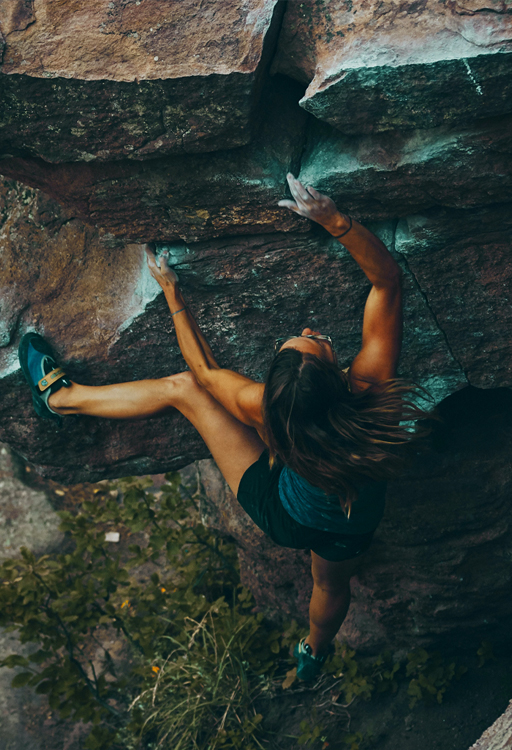1 What is endurance?
Endurance is often associated with sports or events that last for extended periods of time. These can include team sports, marathon running or triathlons. However, endurance is important in a multitude of sports. The following activity will get you to think about how important endurance can be in an alternative sport.
Activity 1
Have a look at the image below showing a rock climber ascending a climb. As you look at the image, answer the following question: why does the climber need endurance? To do this, think about how long the climb may take, how hard and long her muscles may have to contract and how much rest may be available.
Note down your answer in the box below the image.
Discussion
Depending on the length of the climb, a rock climber may be on the rock face from minutes to hours. A climber’s cardiovascular and respiratory systems need to continually supply the working muscles with oxygen to supply fuel (via the aerobic energy system) for the length of the climb and prevent fatigue (cardiorespiratory endurance). Muscles will need to continually contract in order to provide propulsion, strength and maintain technique (muscular strength endurance). Using a combination of cardiorespiratory and muscular strength endurance, climbers can maintain a constant high speed and/or workload close to their maximum, throughout the attempt (speed/power endurance). Following a climb, a climber’s body will be working hard to recover by replenishing energy stores, reducing muscle inflammation and repairing muscle damage. Recovery utilises the aerobic energy system and cardiorespiratory endurance is important to this process.
In the rest of this course you’ll investigate the key factors relating to endurance and review the available training methods for optimising endurance performance.

